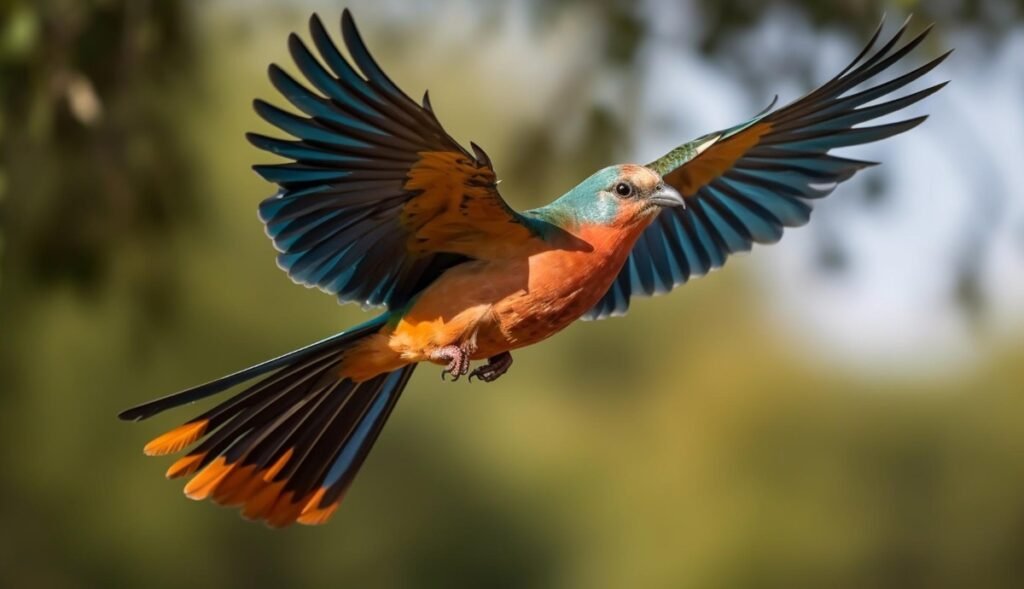Bringing the joy of birds into your life can be a truly rewarding experience. Whether you dream of waking up to the melodious songs of songbirds or want to attract vibrant hummingbirds to your garden, understanding how to attract and care for these feathered friends is essential.
Overview
This guide will provide you with comprehensive information on how to create a bird-friendly environment and successfully attract a variety of species to your backyard or local park. We’ll explore the following key aspects:
1. Understanding Bird Needs
Learn about the essential elements birds require for survival, including food, water, shelter, and nesting sites.
2. Choosing the Right Bird Feeders
Discover the different types of bird feeders available and select the most suitable options for the birds you wish to attract.
3. Providing a Diverse Food Source
Explore a range of birdseed options, supplemental foods, and natural food sources to create a balanced and enticing menu for your feathered visitors.
4. Creating a Safe and Inviting Habitat
Learn how to design your outdoor space to provide birds with protection from predators, shelter from the elements, and ample perching areas.
5. Attracting Specific Bird Species
Discover tips and strategies for attracting particular bird species to your area, based on their unique preferences and habitats.
How to Get Birds
Bringing feathered friends into your life can be a rewarding experience, whether you’re looking for colorful companions or melodious singers. However, acquiring birds responsibly requires careful consideration and planning. This comprehensive guide will walk you through the essential steps to ethically and successfully get birds.
Choosing the Right Bird
Before you embark on your avian adventure, it’s crucial to select a bird species that aligns with your lifestyle, experience, and living space. Consider the following factors:
Size and Space Requirements
Different bird species have varying size requirements. Small birds like finches or budgies may be suitable for apartments, while larger birds like parrots or cockatoos need ample space to fly and explore. Ensure you have a cage or aviary that provides sufficient room for your chosen bird to move comfortably.
Lifespan
Birds can live for many years, some even decades. Be prepared for a long-term commitment. Research the average lifespan of your desired species to ensure you can provide a lifetime of care.
Temperament and Social Needs
Some birds are naturally more social and require interaction, while others are more independent. Consider your own personality and lifestyle. If you’re looking for a talkative companion, parrots or cockatiels might be a good fit. If you prefer a quieter bird, finches or canaries could be more suitable.
Noise Level
Certain bird species are known for their loud vocalizations. If you live in an apartment or have noise-sensitive neighbors, choose a quieter bird or be prepared for potential disturbances.
Diet and Care Requirements
Different birds have unique dietary needs and care requirements. Research the specific diet, cage maintenance, and enrichment activities necessary for your chosen species. (See Also: What Birds Like Safflower Seeds)
Acquiring Your Bird
Once you’ve selected the perfect bird, it’s time to find a reputable source. Avoid purchasing birds from pet stores that may source them from unethical breeders. Instead, consider the following options:
Reputable Breeders
Find breeders who prioritize the health and well-being of their birds. Look for breeders who are members of avian organizations and who can provide documentation of their birds’ health and lineage.
Bird Rescues and Shelters
Many bird rescues and shelters house birds in need of loving homes. Adopting a bird from a rescue is a wonderful way to give a bird a second chance and reduce the demand for commercially bred birds.
Ethical Wildlife Rehabilitation Centers
In some cases, orphaned or injured birds may be available for adoption through ethical wildlife rehabilitation centers. These centers focus on the rehabilitation and release of wild animals, but sometimes they may have birds that are not suitable for release and are looking for permanent homes.
Preparing for Your Bird’s Arrival
Before your new feathered friend arrives, ensure you have everything they need to thrive in their new environment. This includes:
A Spacious and Safe Cage or Aviary
Choose a cage or aviary that is large enough for your bird to move around comfortably, spread their wings, and engage in natural behaviors. Ensure the cage is made of sturdy materials and has a secure latch to prevent escapes.
Food and Water Dishes
Provide your bird with clean and fresh food and water daily. Choose dishes that are appropriately sized and easy for your bird to access.
Perches of Different Sizes and Textures
Birds need perches to rest, climb, and exercise their feet. Offer a variety of perches with different sizes and textures to provide stimulation and prevent foot problems.
Toys and Enrichment Items
Birds require mental and physical stimulation. Provide a selection of toys, such as swings, foraging toys, and puzzles, to keep your bird entertained and engaged.
A Safe and Comfortable Location
Place your bird’s cage or aviary in a location that is away from drafts, direct sunlight, and loud noises. Ensure the area is well-ventilated and has a comfortable temperature.
Introducing Your Bird to Its New Home
When your new bird arrives, allow them time to settle in and adjust to their new surroundings. Avoid overwhelming them with too much attention or handling initially. (See Also: Why Do I Hear Birds Chirping At 1 Am)
Gradual Introduction
Start by placing the bird’s cage in a quiet room where they can feel safe and secure. Allow them to explore their new environment at their own pace.
Building Trust
Speak to your bird in a calm and soothing voice. Offer them treats and engage in gentle interactions to build trust and establish a positive bond.
Patience and Observation
Be patient and observant. Each bird has a unique personality and may take time to adjust. Pay attention to their body language and behavior to understand their needs and preferences.
Providing Ongoing Care
Once your bird is settled in, it’s essential to provide them with consistent and high-quality care. This includes:
A Balanced Diet
Feed your bird a nutritious diet that meets their specific species requirements. Consult with an avian veterinarian for recommendations on appropriate food choices.
Fresh Water Daily
Change your bird’s water daily to ensure they have access to clean and fresh water.
Regular Cage Cleaning
Clean your bird’s cage or aviary regularly to maintain a hygienic environment. Remove droppings, soiled bedding, and food debris daily. Disinfect the cage thoroughly at least once a week. (See Also: How To Keep Birds Away From Air Conditioner)
Veterinary Checkups
Schedule regular veterinary checkups for your bird. An avian veterinarian can provide essential health care, including vaccinations, parasite prevention, and early detection of any health issues.
Enrichment and Socialization
Provide your bird with ample opportunities for enrichment and socialization. Offer a variety of toys, engage in interactive play, and consider providing them with a companion bird if appropriate for their species.
Recap
Acquiring birds is a significant responsibility that requires careful planning and commitment. By selecting the right bird species, finding a reputable source, preparing a safe and stimulating environment, and providing ongoing care, you can create a fulfilling and enriching experience for both you and your feathered companion.
Frequently Asked Questions About Getting Birds
What types of birds are suitable for beginners?
Some popular beginner bird species include budgies, finches, canaries, cockatiels, and lovebirds. These birds are generally smaller, easier to care for, and have relatively lower maintenance requirements.
Where can I find healthy birds for adoption?
Reputable breeders, bird rescue organizations, and animal shelters are excellent places to find healthy birds. Always prioritize adopting from a responsible source that prioritizes the well-being of their birds.
How much does it cost to get a bird?
The cost of a bird can vary widely depending on the species, breeder, and location. Generally, you can expect to pay anywhere from $20 to $500 or more for a bird. Remember to factor in the ongoing costs of food, toys, vet care, and housing.
What are the essential supplies I need for a new bird?
Essential supplies include a spacious cage, perches of varying sizes, food and water dishes, toys for enrichment, a bird-safe cleaning solution, and a cuttlebone or mineral block for calcium.
How do I introduce a new bird to my home?
Introduce your new bird to its cage gradually, allowing it to acclimate to its surroundings. Avoid loud noises or sudden movements. Provide fresh food and water, and offer treats to encourage bonding. Be patient and allow the bird time to adjust.


